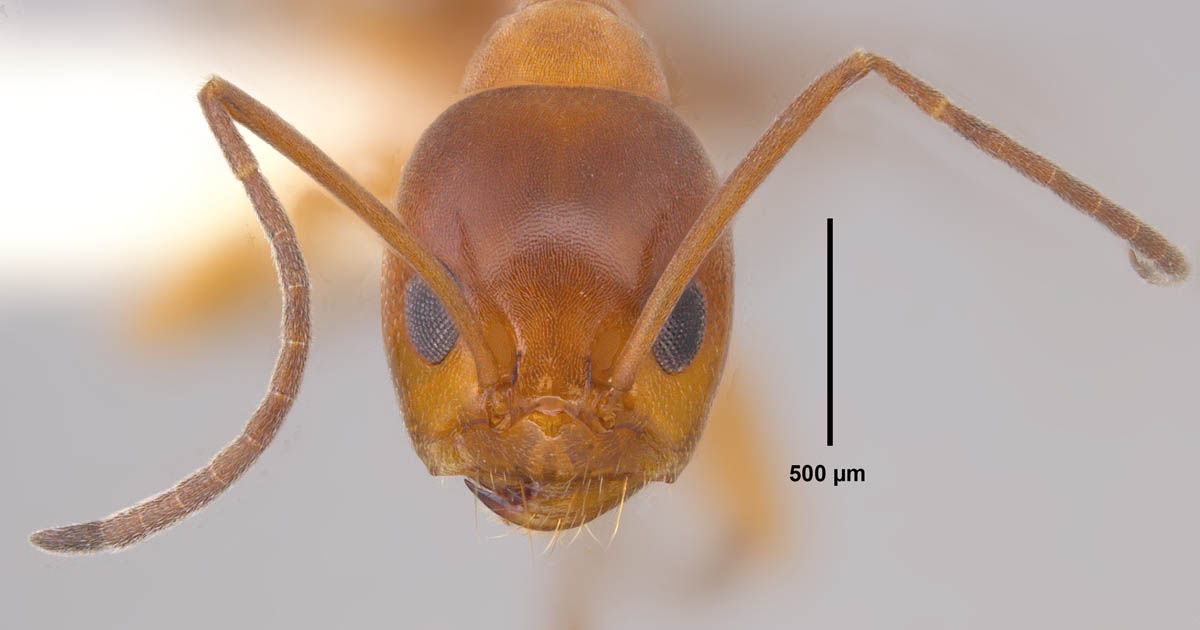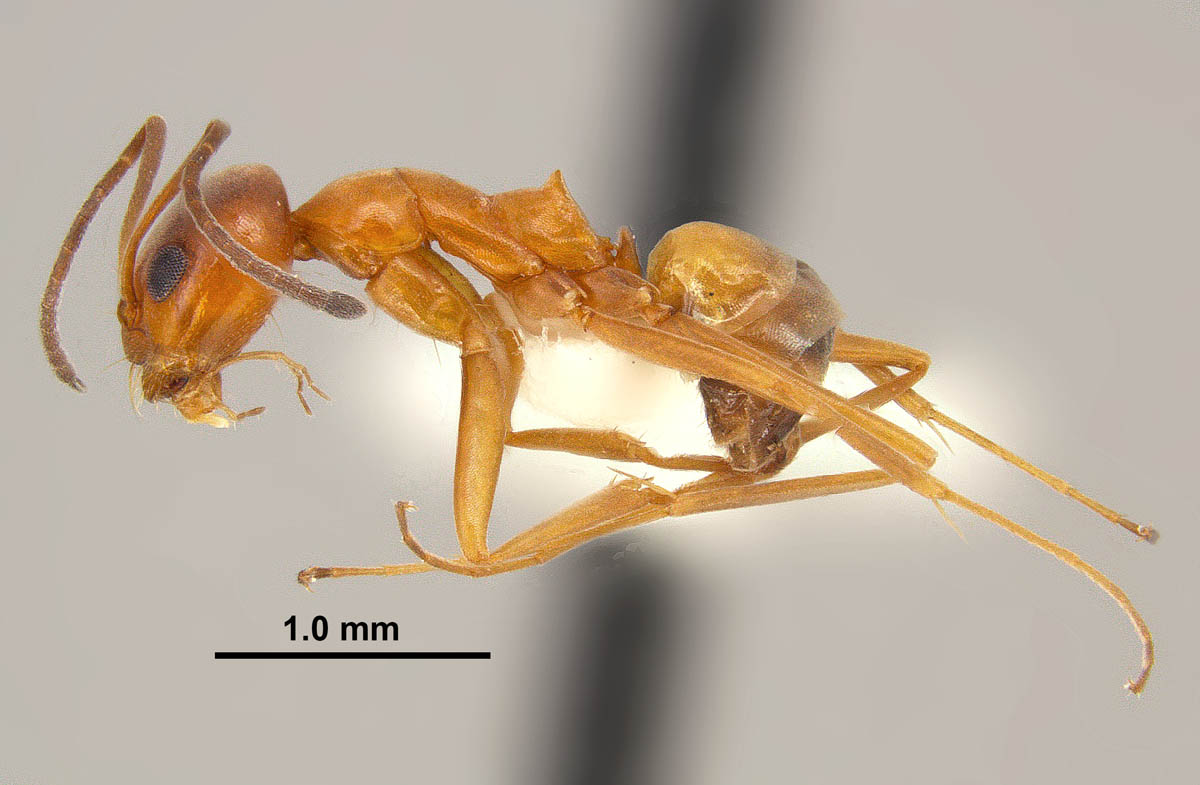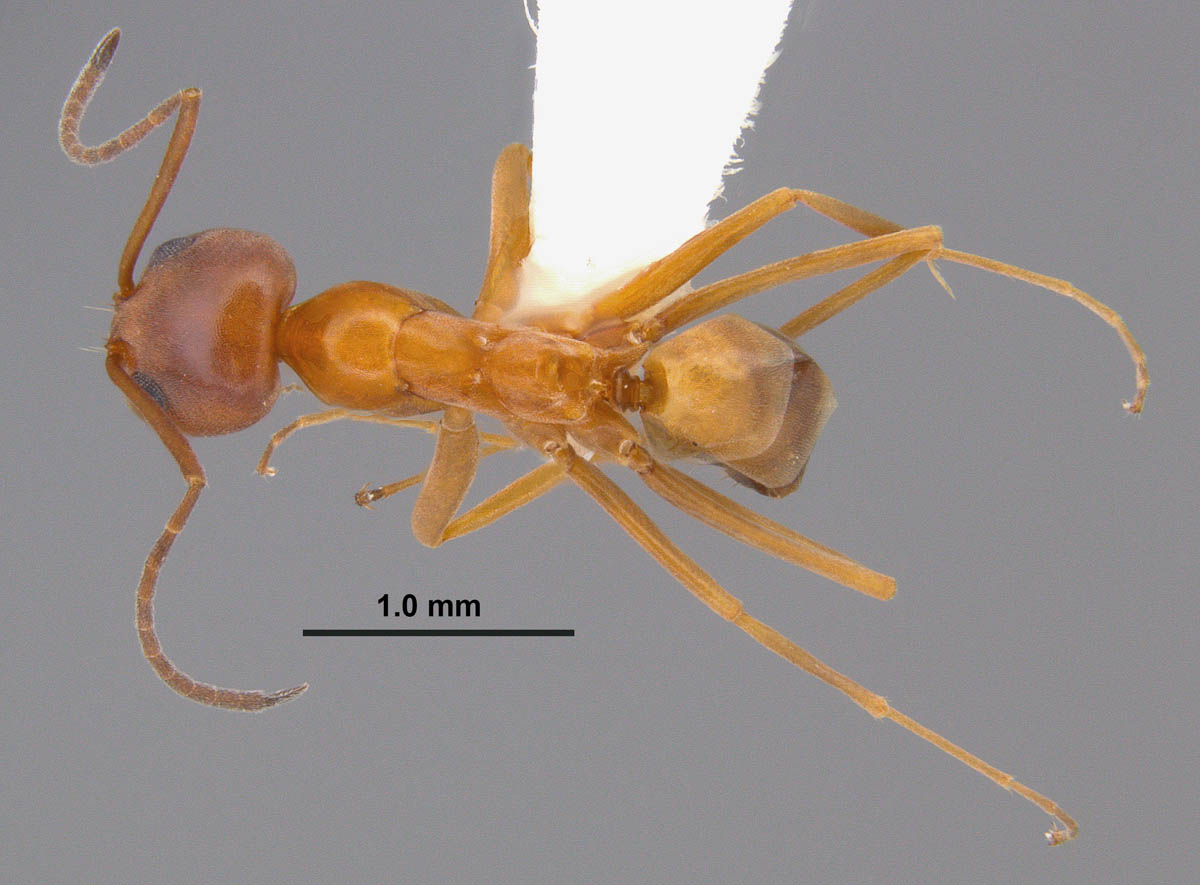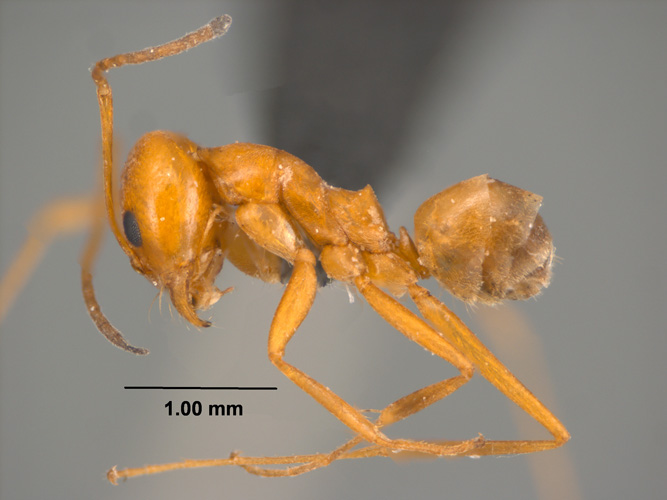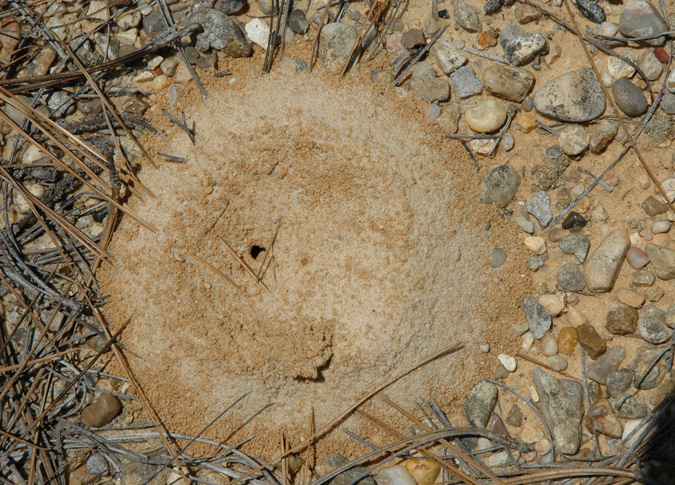Subfamily DOLICHODERINAE Tribe DOLICHODERINI Dorymyrmex bureni (Trager) pyramid ant |
||
Dorymyrmex bureni, full face view of the head of a worker (GA, Chatham Co.) (Photo by Joe A. MacGown) |
Dorymyrmex bureni, lateral view of the head of a worker (GA, Chatham Co.) (Photo by Joe A. MacGown) |
Dorymyrmex bureni, dorsal view of the head of a worker (GA, Chatham Co.) (Photo by Joe A. MacGown) |
Dorymyrmex bureni, full face view of the head of a queen (MS, Jackson Co.) (Photo by Joe A. MacGown) |
Dorymyrmex bureni, lateral view of the head of a queen (MS, Jackson Co.) (Photo by Joe A. MacGown) |
Dorymyrmex bureni, dorsal view of the head of a queen (MS, Jackson Co.) (Photo by Joe A. MacGown) |
Dorymyrmex bureni, full face view of the head of a worker (Photo by Joe A. MacGown) |
Dorymyrmex bureni, lateral view of a worker (Photo by Joe A. MacGown) |
Typical crater mound surrounding the entrance to a Dorymyrmex bureni nest (Photo by Joe A. MacGown) |
Overview Common names Identification Queen: Overall length approximately 6.5 mm. Color, darker orangish-brown with funiculus brownish (except first segment, which is usually lighter) and posterior portion of gaster brownish. Integument dulled by dense pubescence. Male: May be separated from the similar Dorymyrmex flavus by its larger ocelli, which are smaller in the day flying D. flavus. This species is can be identified in the field by its yellowish coloration, long legs and scapes, fast movement, and by its preference for sandy soils. Dorymyrmex bureni may be confused with D. flavopectus, which differs by having longer antennae and by having a dark brown head and gaster that contrasts with the yellowish colored alitrunk. Another similar species is D. flavus, which is typically more western in distribution and usually has an angular mesonotum (best seen in profile view). Biology and Economic Importance It is not uncommon to find mixed colonies of D. bureni and D. smithi. Trager (1988) states that D. smithi (D. medeis in his paper) is a temporary social parasite of D. bureni. This species is not considered a pest or nuisance species as it does not frequent man-made buildings, does not sting or readily bite, and does not shoot noxious formic acid as in some formicine ants. In fact, the species would be considered beneficial by most people due to its predatory behavior, which may provide some amount of biological control of pest species (Trager, 1988) including its ability to hold its own against the imported fire ants. Distribution Literature Cited MacGown, J. A. 2011. Ants of the Southeastern United States (species list). [accessed 18 January 2011]. Snelling, R. R. 1995. Systematics of Nearctic ants of the genus Dorymyrmex (Hymenoptera: Formicidae). Contr. Sci. (Los Angel.). 454: 1-14. Trager, J. C. 1988. A revision of the Conomyrma (Hymenoptera: Formicidae) from the southeastern United States, especially Florida, with keys to the species. Florida Entomologist 71: 11-29. Links AntWeb |
||


